Bhubneshwar : Bhubaneshwar the ‘city of temples’, named after Tribhuvaneswar, ‘Lord of Three Worlds’, still preserves over 500 of India’s finest temples, around which the religious life of the city revolves. Mythological references and the epigraphic sources describe the area as Ekamra Kshetra and Saiva Pitha. In 1936, the Odisha (Odisha (Orissa)) became a separate province with Cuttack as its Capital, which was eventually changed to Bhubaneswar in 1956. Bhubaneswar forms the ‘golden triangle’–one of the most visited destinations in East India, for its proud possession of magnificent sculpture and majestic architectural heritage.
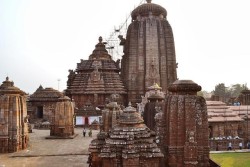 |
#Lingaraj Temple The Lingaraja Temple is the largest temple in the city of Bhubneshwar. The Temple is a marvelous example of the finesse of the Kalinga style architecture and was constructed in the 11th century AD. The primary deity of the temple is Lord Shiva who is worshipped in his Harihara form. The temple also contains several images of Vishnu and is a marvel to behold. |
| #Udayagiri and Khandagiri Caves Khandagiri has 15 caves, while Udayagiri meaning ‘Sunrise Hill’, has 18 caves. These partly natural and partly artificial caves of archaeological, historical and religious importance are called lena or lena in the inscriptions. Dug out mostly during the reign of Kharavela for being the abode of Jain ascetics, the caves are located at a distance of 8 km from the destination. A double storeyed monastery, Ranigumpha in Udayagiri is the most important of this group. |
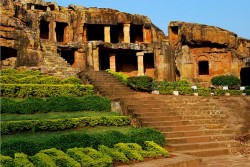 |
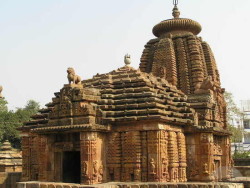 |
#Mukteswara Temple Mukteswara Temple, has sculptured gateways, diamond shaped latticed windows, decorated interiors and large number of carvings. Dedicated to Lord Shiva, who is considered as the most complex Lord amongst the Hindu Gods, the temple is imprinted with figures of ascetics in different poses of meditation. Name of the temple that means ‘Lord who gives freedom through Yoga’, is empowered by the sculptural images. Several small shrines that comprise numerous lingams of Lord Shiva, are located within the temple. |
| #Raj Rani Temple The small temple is decorated with carvings that stand testimony to the architectural cognizance of Vishwakarma Moharana sculptors. Regarded as a gem of Nagara architecture, ‘Orissan style’, the temple has been carved out of red sandstone. Covered with exquisite carvings of lean Sadhus or holy men as well as voluptuous women encrusted with jewels, the temple complex also has a tank that is still in use by devotees. Raj rani Temple, dating from 11th century, is famous for its sculpted figures and the successive tiers of projections rising to form its 18 m high tower. Spire, reminiscent of the temples of Khajuraho, along with a square sanctuary and its interior and exterior surfaces are the chief features of the temple. Fine sculptures of dikpalas or guardians of the eight directions carved around the shrine are prominent highlights of the temple. |
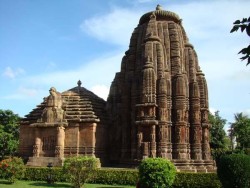 |
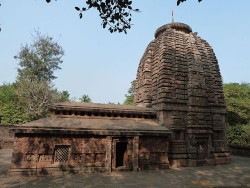 |
#Parasurameswara Temple
The temple is built in the Nagara Style and is dedicated to the Hindu deity Lord Shiva. The temple is exemplary of the Stone carving mastery of the artisans and is decorated with the most intricate carved sculptures of various Hindu deities. |









